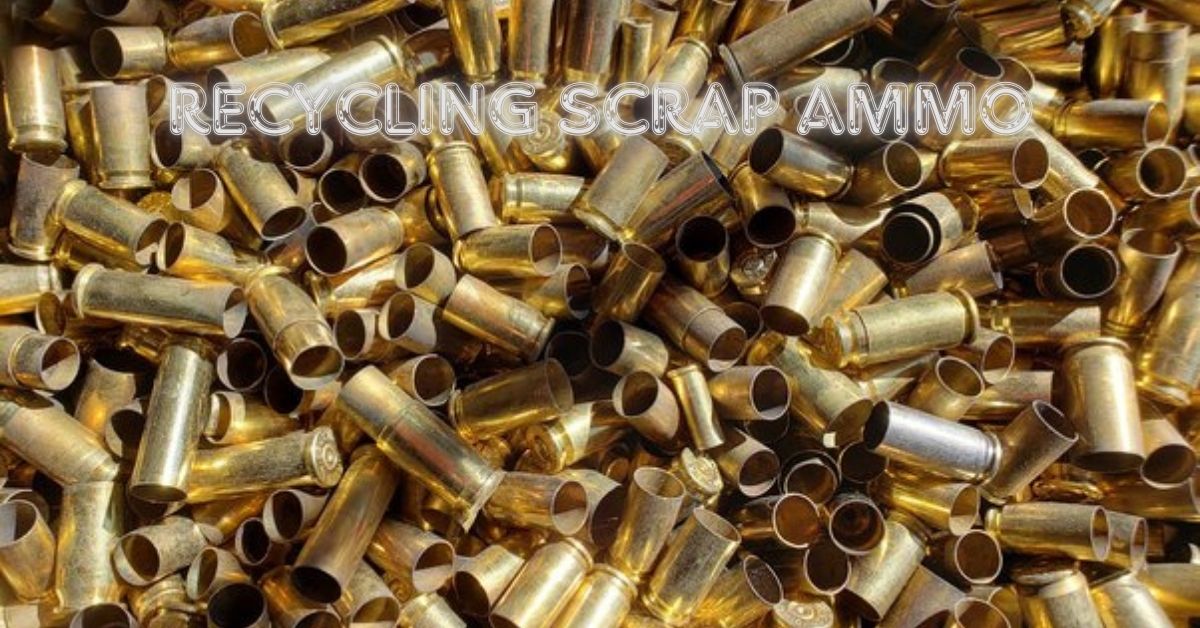Physical Address
304 North Cardinal St.
Dorchester Center, MA 02124
Physical Address
304 North Cardinal St.
Dorchester Center, MA 02124

In the world of shooting sports, firearm manufacturing, and military logistics, recycling scrap ammo has become an increasingly important focus for enthusiasts and industry professionals alike. Whether you’re a seasoned reloader, a manufacturer, or a hobbyist interested in sustainable practices, understanding how to properly handle and recycle scrap ammunition components is essential. Not only does this promote environmental conservation, but it also offers economic benefits by reducing dependence on raw materials and cutting costs. This comprehensive guide explores every facet of recycling scrap ammo, from its sources and materials to safety protocols, legal considerations, and future trends.
Scrap ammo refers to unused or damaged ammunition components that are no longer suitable for firing. This can include empty casings, primers, residual gunpowder, and damaged projectiles. While these parts cannot be used directly for shooting without reconditioning, they present an opportunity for recycling and reuse, thereby contributing to sustainable ammunition practices.
Recycling scrap ammo begins with identifying its sources. These include:
The main materials extracted during recycling include:
The first step involves gathering scrap ammunition and sorting it by material type. Brass casings, primers, and powders should be stored separately to prevent cross-contamination and facilitate safe processing.
Disassembling scrap ammo is a crucial part and must be done with caution. Key steps include:
Once disassembled, materials can be cleaned and processed further:
Final steps involve melting brass casings for reuse and refurbishing usable primers. Damaged primers are typically disposed of, while unusable gunpowder residues are safely managed or recycled through specialized services.
All scrap ammo components should be stored in clearly labeled, fireproof containers, away from heat and sparks. Proper ventilation is essential to manage any residual fumes or gases.
Residual gunpowder or primers pose explosion risks if mishandled. Professionals recommend following strict safety protocols, such as wearing protective gear, using non-sparking tools, and conducting processes in controlled environments.
Recycling scrap ammo involves compliance with federal and state laws, including those enforced by the ATF. Always verify your local requirements before beginning any recycling activity.
The recycling of scrap ammo is subject to strict regulations. Federal laws prohibit privately converting scrap components into new, live ammunition without proper licensing. State regulations may impose additional restrictions, especially regarding the handling of hazardous materials.
If operating a professional recycling or reconditioning business, obtaining the necessary licenses is mandatory. This includes adhering to safety standards and ensuring all processes are legal under the Bureau of Alcohol, Tobacco, Firearms and Explosives (ATF) guidelines.
While recycling is encouraged, transforming scrap ammo into live rounds without appropriate licensing may be illegal. Always consult legal counsel or regulatory agencies such as the EPA or ATF to avoid violations.
The primary environmental benefit is the significant reduction in lead and chemical waste produced during ammunition manufacturing and disposal. Recycling scrap ammo supports greener shooting practices.
Recycling components like brass casings and primers reduces the expenses associated with buying new raw materials, especially for reloaders and small manufacturers.
Reducing the demand for virgin raw materials like metal ores and chemicals helps preserve the environment and minimizes extraction impacts.
Advancing sustainable ammunition technologies can inspire industry-wide shifts toward cleaner, more efficient manufacturing processes.
The handling of residual primers and gunpowder carries inherent risks of accidental ignition. Safety protocols must be strictly followed to prevent injuries.
Ensuring that recycled components meet strict standards is critical for safety and performance. Improper processing can lead to malfunctions or unsafe ammunition.
Complex regulations can hinder recycling efforts, especially for hobbyists and small-scale operators lacking proper licenses.
Current recycling technologies may not fully recover or refurbish all materials efficiently, pointing to a need for ongoing innovation.
Use dedicated containers to store brass casings, primers, and powders. Always label and separate materials clearly.
Use appropriate tools and follow manufacturer guidelines or tutorials for disassembling old or spent ammunition. Wear protective gear and work in safe environments.
Seek reputable companies or facilities that specialize in ammunition component recycling. Verify their credentials and compliance record.
Emerging machinery and chemical processes aim to improve the efficiency, safety, and environmental impact of recycling scrap ammo. Breakthroughs include automated disassembly and eco-friendly reconditioning methods.
Major manufacturers are investing in sustainable practices, including developing recyclable ammunition and reducing reliance on hazardous materials.
Anticipated tighter regulations will encourage more comprehensive recycling programs and innovations aimed at minimizing ecological footprints.
| Aspect | Best Practices |
|---|---|
| Collection | Separate brass, primers, powders; store in labeled, fireproof containers |
| Disassembly | Use proper tools; wear safety gear; handle primers and powder carefully |
| Material Recovery | Clean brass; recycle primers; dispose of powder per regulations |
| Safety | Follow all safety protocols; operate in ventilated, fire-resistant environments |
| Legal Compliance | Obtain required licenses; adhere to federal, state laws |
| Environmental Impact | Recycle to reduce lead and chemical waste; support eco-friendly practices |
Recycling scrap ammo is subject to federal and state laws. Always check local regulations and obtain necessary permits before proceeding.
Only licensed manufacturers or reloaders can legally convert scrap components into live ammunition. Unauthorized reloading is illegal in many regions.
The most valuable are brass casings because they can be melted down and reused repeatedly, followed by primers if refurbishable.
Store in fireproof, labeled containers away from heat, static, and sparks. Follow local safety regulations for hazardous materials.
Yes, numerous companies specialize in ammunition component recycling and reconditioning. Research reputable providers with proper licensing.
Recycling reduces lead contamination, chemical waste, and resource extraction, supporting sustainable shooting and manufacturing practices.
Yes, residual primers and gunpowder can be hazardous. Proper safety measures and compliance with environmental regulations are essential.
Advances include automated disassembly systems, eco-friendly reprocessing chemicals, and improved materials that are easier to recycle.
Visit [ATF](https://www.atf.gov/) and local regulatory agencies for comprehensive guidelines and licensing procedures.
Industry trends favor sustainability, technological innovation, and stricter regulations promoting responsible recycling practices worldwide.